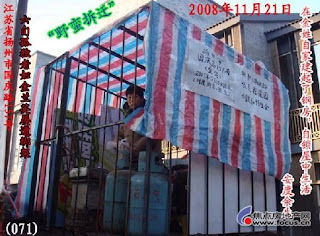In my hometown of Yangzhou, China, on the very block that I grew up, a major commercial development has just finished. This new commercial sector featured a cluster of two-storey mixed-use buildings with retail and entertainment on the first level and offices on the upper-storeys, built as an attempt to attract more tourists to Yangzhou to increase the city's revenue. The architecture of these buildings attempted to apply some of the local features with limited success. However, the development had a HUGE impact on the people and neighborhoods around the area. A residential area of "hutong" small alleyways with traditional-styled housing, was completely torn down before the development. Thousands of people had to be relocated to other residential areas. Although the government offered full monetary compensation, or housing of similar value, many people refused to leave their homes, many of which were built prior to the twentieth century. Families have lived in these houses for generations, and refused to move somewhere else far away from friends, family, and their familiar neighborhoods. The extent of civilian resistance was seen on November 21, 2008, when two elderly women, as a form of protest, decided to live in a cage on the street where demolition was about to take place:
They lived in this cage until the afternoon of December 3, 2008, when the government construction company charged with the demolition, out of desperation, enlisted the help of a local gang. A group of gang members approached the cage and sprayed the two elderly women with an acidic mixture of sodium-bicarbonate, ammonium dihydrogen phosphate, and barium sulfate:


The two elderly women received severe burns to their skin and damage to their eyes, and were immediately rushed to the hospital:
Such a horrible type of acts have been committed before, to a lesser degree, in my hometown. These type of unethical and heinous acts have left helpless citizens living under the manipulation of the government.




I was really interested in hearing you talk about your topic the other night, and I also focused a lot on the part of the reading that spoke about a planned city vs. a growing city. I think your point about the limited success of the architecture that still had a major impact on people is important, and raises the question how to really integrate the vernacular with what will impact the people. You are dealing with a pretty powerful social subject here in terms of people refusing to leave their homes, and I think that this brings up the social aspect of the planned vs. growing city. In a growing city, how do you respond to unanticipated circumstances such as these people refusing to leave their homes? Or... how do you plan for this?
ReplyDelete